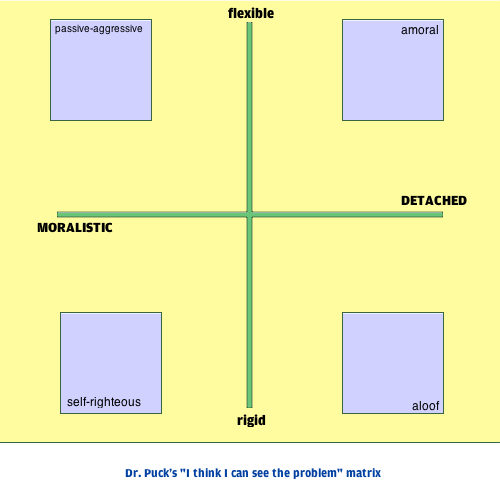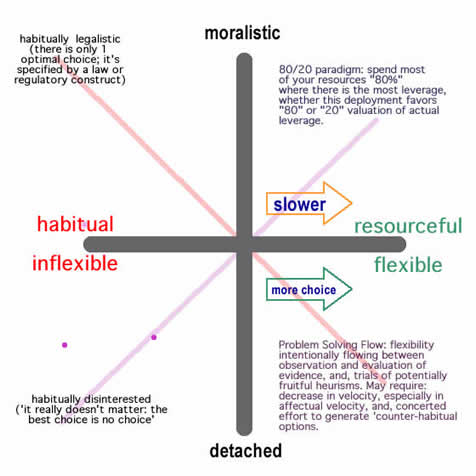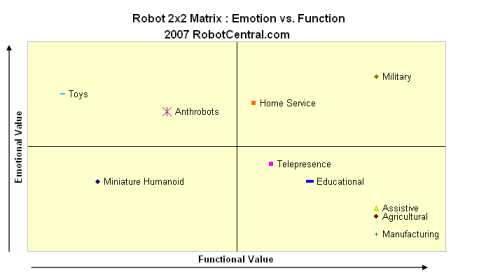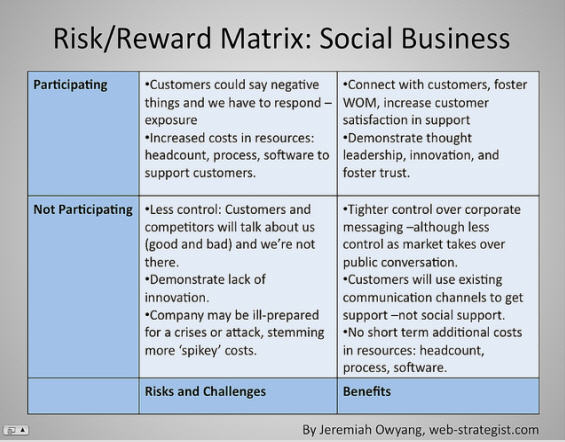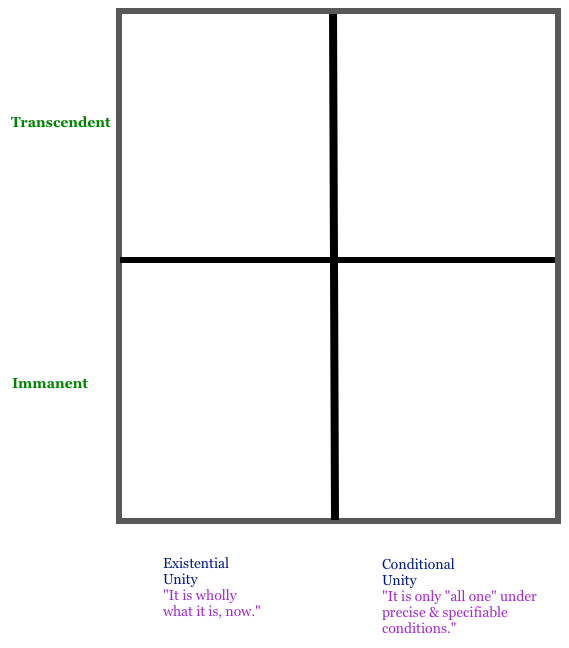What I term a ‘four square,’ or matrix, derives in modern times from The Boston Consulting Group’s Growth-Share Matrix. I devise my own four squares and collect any others I encounter. At times the 2×2 Matrix in either its ‘cross’ or ‘four squares’ versions have done duty in my work to help depict human situations. For example, I have employed the following one and used it as the basis for a learner to reflect upon the challenge of having it both ways.
Such visual devices have come to be known as 2×2 Matrix. The essential book on the use of the 2×2 Matrix in business, The Power of the 2×2 Matrix, presents authors Alex Lowy and Phil Hood’s understanding of the tool’s value as an aid to decision making.  They write:
They write:
2 × 2 Thinking is inherently and profoundly transcendent in nature. Two people face an identical problem differently: one sees an insurmountable problem, while the other perceives options and opportunities. Systems thinker Jamshid Gharajedaghi calls these two approaches either-or versus both-and. Confronted by tough choices, the either-or reaction is to feel trapped and obliged to pick one or the other. The both-and response draws us automatically to a new and different perspective, where it is possible to search for ways to reframe the problem or use conflicting factors in the solution.
The Institute for Manufacturing at The University of Cambridge describes the matrix yet misses two central capabilities, the use of the 2×2 Matrix to plot values, and, the implicit relational dynamic given in the identification of what in this description is termed characteristics.
A two by two matrix is a useful tool for initial sorting of qualitative data.
The axes should be chosen so that, e.g., the data with the most desirable characteristics will fall into the upper left quadrant and the least desirable in the lower right quadrant. While groups may be unable or unwilling to assign absolute values to qualitative data, they usually find it relatively easy to come to a consensus as to which quadrant something belongs in.
Generally, the two by two matrix is a useful tool for categorising things that can be reduced to two simple variables, particularly when quantitative information is unavailable and qualitative judgements must be made.
It enables a rapid clustering (or separating) of information into four categories, which can be defined to suit the purpose of the exercise. It is particularly useful with groups as a way of visibly plotting out a common understanding or agreement of a subject.
2×2 Matrices I’ve found, from the growing collection:
I devised the following to depict the tension of oppositions betwixt four entangled philosophical themes.
The 2×2 Matrix is a very Batesonian device too. I haven’t beta tested a workshop during which learners build a view of their self (or what-have-you,) using the format, yet, it seems a good idea!


